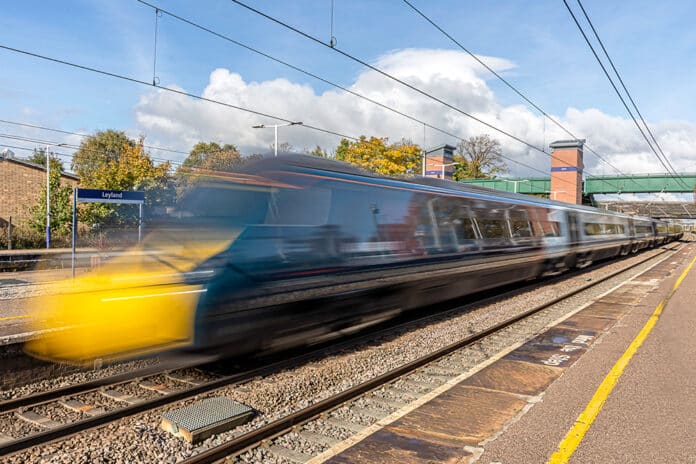Rail passenger numbers are approaching pre-Covid levels
In mid-January 2022, UK rail passenger numbers were barely half of pre-pandemic levels. Yet a year on, according to Department for Transport figures, levels have risen dramatically – between 14-31 January this year, passenger numbers hit 90-98% of pre-Covid levels every single day, including on Mondays and Fridays. (1)
Despite often misleading reporting, the evidence is clear: rail passengers are coming back in droves, even taking into account industrial action and sometimes poor service levels on some parts of the network.
Additionally, passenger revenues are reaching 85% of pre-Covid levels too, with opportunities for further recovery in the months ahead. Rail is not a sector requiring managed decline – rather, it is bouncing back strongly following the years of Coronavirus.
UK rail supports the wider economy
UK rail also contributes to economic growth and skilled jobs. A report produced by Oxford Economics in 2021 (2) found that the railway industry generates £43 billion across the wider economy, 710,000 jobs, £14 billion in annual tax revenues, and for every £1 spent on rail, £2.50 is generated in the wider economy.
UK rail is needed to decarbonise transport
UK rail is a big part of the decarbonisation story, too. Rail carries 10% of all transport journeys but accounts for less than 0.5% of CO2 emissions. Today, each tonne of rail freight reduces carbon emissions by 76% compared to road. So a shift towards rail creates enormous potential to reduce transport emissions. (3)
Six ‘asks’ of the UK Government, ahead of the Spring Budget on 15 March
The Railway Industry Association is calling on the Government’s forthcoming Spring Budget to:
1. Provide investment certainty and transparency. This incurs no cost to the Exchequer but is crucial for ensuring the right people, skills and equipment are in the right places to deliver effectively and efficiently.
2. Deliver investment in major infrastructure. Rail projects transform cities, towns and communities. So schemes such as HS2, East West Rail, Northern Powerhouse Rail, Midlands Rail Hub, Crossrail 2 and a number of other enhancements projects, need to be delivered in full to ensure the fullest possible benefits in the years ahead.
3. Accelerate decarbonisation and clean growth. A steady programme of investment in rail electrification and low carbon technologies such as hydrogen and battery will reduce carbon sooner, be more cost-effective and will sustain high value jobs.
4. Get on with rail reform. Whilst the Government’s commitment to the Great British Railways restructuring of rail is welcome, we also need a long-term strategy for rail. A lack of clarity about the future of the railway hinders investment and makes it harder to secure the best talent.
5. Unlock innovation and private investment. Innovation is essential, not just for boosting efficiency and productivity, but for the railway to rise to challenges such as climate resilience. Private investment can bring finance and new technologies.
6. Promote rail exports. UK rail has a great international reputation. With Government support there is potential to significantly increase exports – global rail markets are predicted to grow 3% every year to 2027. (4)
1 https://assets.publishing.service.gov.uk/government/uploads/system/uploads/ attachment_data/file/1136638/COVID-19-transport-use-statistics.ods
2 https://www.riagb.org.uk/RIA/Newsroom/Publications%20Folder/OE_2021.aspx
3 https://dataportal.orr.gov.uk/media/1993/rail-emissions-2020-21.pdf
4 https://www.unife.org/news/global-rail-supply-industry-resurgent-despite-crises/
Photo credit: Shutterstock







































 0113 2082620
0113 2082620 info@railbusinessdaily.com
info@railbusinessdaily.com 15 Mariner Court, Wakefield WF4 3FL
15 Mariner Court, Wakefield WF4 3FL

